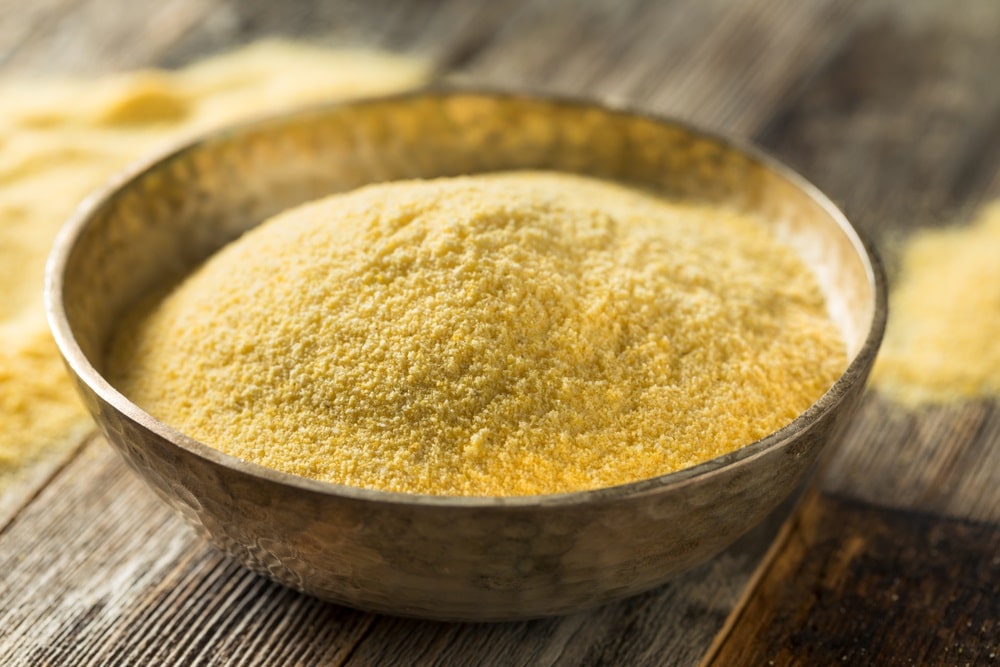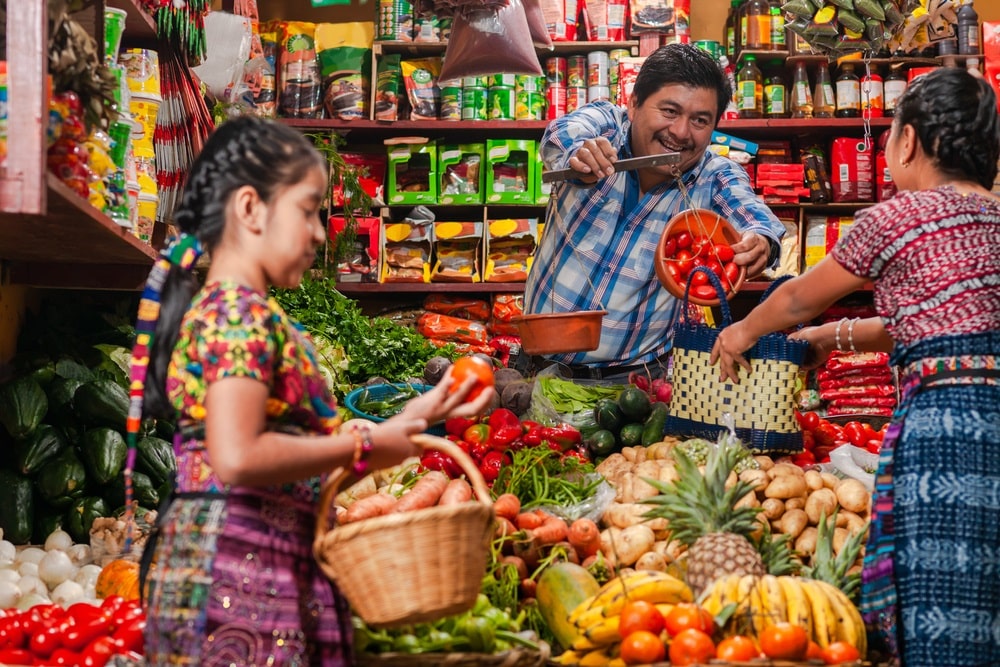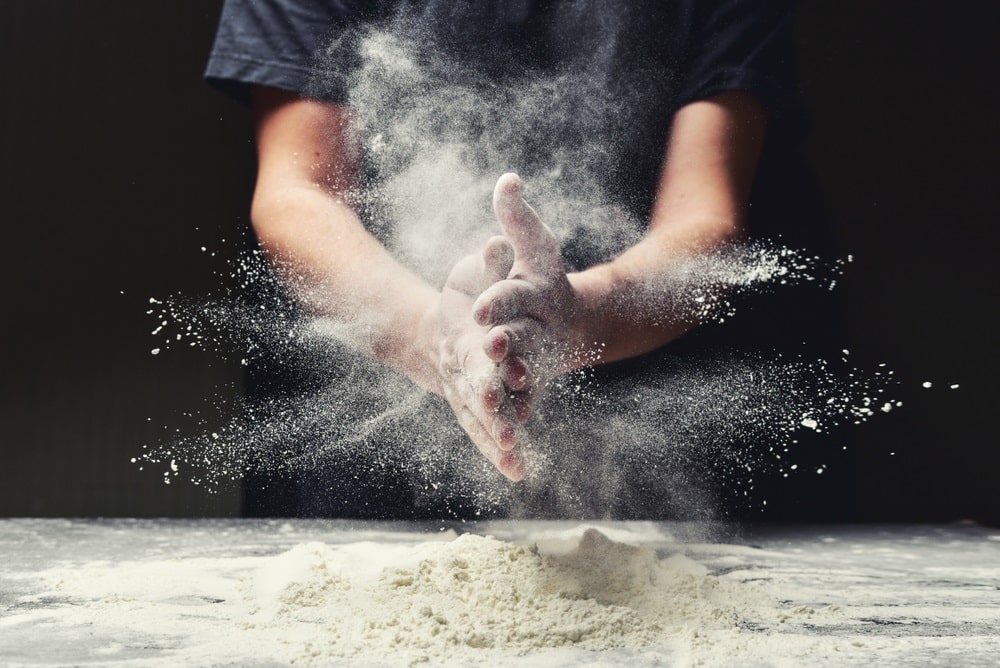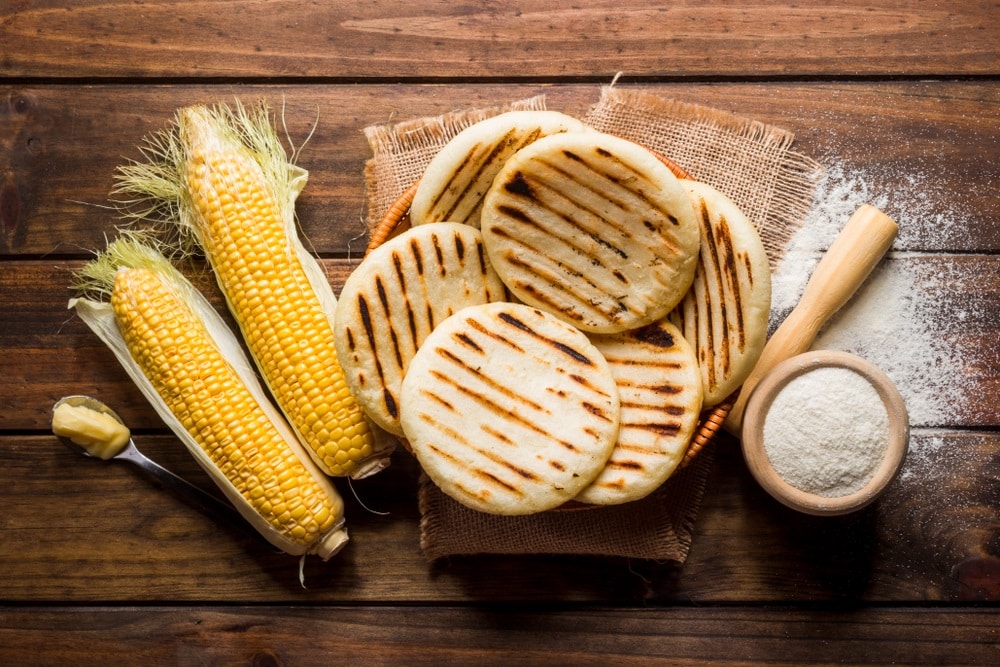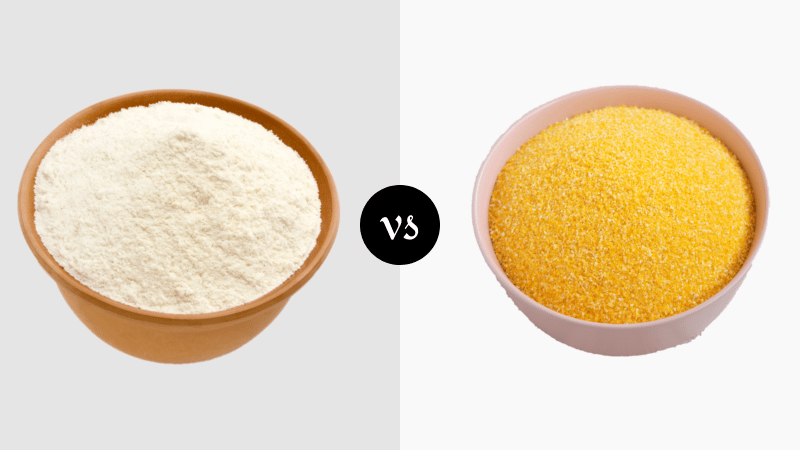
Corn flour, also occasionally known as cornstarch or cornmeal, is a yellow-colored powder that is made from the inside of a corn kernel. It is most commonly used in food preparation as a powder that thickens soups and condiments but can also be used for making dough and baking.
We’re taking you through a look at two of the most distinctive types of corn-based flour available. Our overview of masarepa vs. masa harina has everything you need to know to use each type to its full potential.
However, before we dive into the differences, we first have to look at the number one thing that differentiates both of them – Nixtamalization.
What Is Nixtamalization?
Most Mexican and Central American flours soak their dried kernels in food-grade lime (calcium hydroxide) and then rinse the corn thoroughly to remove the pericarp or outer kernel cover.
Finally, the kernels are milled to form a dough which is then dried and powdered to flour or cooked as is. Masa harina undergoes nixtamalization, whereas masarepa does not.
Corn Flour And Its Various Types
Corn flour is a vital ingredient in many recipes and a common feature in Mexican food that’s used to make tortillas, pupusas, arepas, and many other delicacies.
Both masarepa and masa harina are two types of flour, but this doesn’t make them similar or necessarily interchangeable despite having the same base.
These really tiny details help to recognize the differences between Masarepa and Masa Harina. Incorrect or made-up facts can be the reason many major cooking disasters happen in kitchens.
Although, if you continue reading, you’ll find that knowing the differences is incredibly easy.
All About Masa
Masa is a term of Spanish descent that refers to maize dough that’s made from nixtamalized corn. Masa is actually a damp stretchy dough that’s made after grinding corn kernels into a fine powder following cooking and then soaking in lime water or another similar alkaline solution.
As the corn soaks, it breaks down and forms the nut-like taste of masa powder that’s made later. Even though masarepa and masa harena share the same prefix, as mentioned, only masa harina is nixtamalized. The ‘masa’ in masarepa is simply a reference to maize.
Masarepa vs. Masa Harina Comparison
| Masarepa | Masa Harina | |
| Definition | Corn Dough Used to Make South American Arepas | Corn Flour Made From Nixtamalized Corn Turned To Masa Dough That’s Dried And Ground To Powder |
| Composition | Pre-Cooked Yellow Cornflour That Hasn’t Undergone Nixtamalization | Cornflour Nixtamalized Then Milled To Dough Before Pressing To Flour |
| Texture | Gritty But Pourably Starchy, Powdery Flour | Coarse, Gritty But Flowing Granular Texture |
| Flavor | Corn-Like Flavor With Faint Nuttiness & Sweetness That’s Milder Than Tortilla | Sweet, Nutty Corn-Like Flavor That’s Neutral But Complex |
| Best Uses | Making South American Delicacy Called Arepas | Flour For Coating/Dredging | Tamales, Tortillas, Corn Cakes, Pupusas, Sopes, Empanadas, Gorditas, Thickening Agent |
| Availability | Latin Foods Section | Readily Available Online | Widespread Availability Online & In Stores |
| Affordability | $3-$4 Per Pound | $6-$7 Per Pound |
| Substitutions | 1 1/2 Cups Masa Harina + 1/4 Cup Coconut Flour | Cornmeal | Grits | Corn Flour, Masa Preparada, Dried Hominy, Cornmeal, Masa De Maiz |
Masarepa
Unless you’re familiar with the tasty griddle cakes known as arepas, you’re probably new to masarepa. It’s not to be confused with its Mexican cornflour counterpart.
Let’s take a closer look at when to use masarepa and what makes it different from other varieties of corn-based flour.
What Is Masarepa?
Masarepa is a corn dough that’s primarily used to make the South American fried dough food called arepas, that’s best described as a griddlecake. It is best defined as instant corn flour that hasn’t undergone the process of nixtamalization.
What Is Masarepa Made From?
While the exact milling technique varies from manufacturer to manufacturer, masarepa is made from precooked yellow cornflour that hasn’t been soaked in an alkaline solution like masarepa.
Texture
Due to lacking nixtamalization, masarepa has a similarly gritty but pourable texture to masa harina but is far more starchy and powdery.
Flavor
Expect a corn-like flavor from masarepa with a far milder, more subtle taste than a tortilla. There’s a faint nuttiness and sweetness that lingers.
Best Uses
The one and most widely used use for masarepa is the making of arepas. People all across the world make their arepas using only the masarepa corn flour because it is directly responsible for the delectably unique taste and texture.
Another widespread use for masarepa is making empanadas and deep-fried turnovers filled with whatever filling is preferred. The only alternative use that would typically arise is as an ingredient to combine with other flours when frying or coating foods.
Availability
Most people can find masarepa in their local supermarket or grocery store under the Latin aisle. Otherwise, it’s readily available online. While sold online to all, masarepa is significantly harder for people outside of the US and South America to find than masa harina.
Affordability
Masarepa cornmeal typically sells for between $3 to $4 per pound. Considerable savings can be found when shopping at a Latin American specialty store or Mexican food market instead.
Masarepa Substitutions
The best substitute for masarepa is a blend of 1 1/2 cups of masa harina and a quarter cup of coconut flour. If coconut flour isn’t available, opt for any other gluten-free flour like arrowroot or potato starch instead.
Alternatively, opt for an equal quantity of cornmeal or grits but keep in mind that the texture will be slightly more gritty.
Masa Harina
There’s no making tortillas without resorting to masa harina. The texture and taste simply aren’t the same, no matter what alternative you try to use. Yet, it’s not only this single type of tasty Mexican food where masa harina is vital. Let’s take a closer look.
What Is Masa Harina?
Masa harina is corn flour made from nixtamalized corn turned into a dough called masa which is then dried and ground down. It’s also commonly known as dough flour as the word ‘masa’ means dough and ‘harina’ means flour.
What Is Masa Harina Made From?
Masa harina is a flour made from corn that has undergone nixtamalization and then been turned into dough. Masa, also known as Spanish dough, is dried under high temperatures and sunlight.
The dried dough is then powdered again by heavy industrial machines, and by labor in non-industrial areas, into a finely processed form that’s ground and remade into masa harina flour.
Texture
Masa harina is a coarse, gritty but flowing texture that’s almost as powdery as cornflour but with a more granular feel. Adding water to masa harina at first seems trivial, with the flour taking on a crumbly appearance instead of holding its shape like regular flour.
Flavor
Expect a sweet, nutty corn-like taste from masa harina that’s wholesome but neutral with a surprising depth of flavor.
Best Uses
Masa harina is an essential ingredient for several Latin American classics, including but not limited to tamales, tortillas, Salvadoran/Honduran corn cakes known as pupusas, sopes, empanadas, and gorditas.
Many people use masa harina as a thickening agent to improve the viscosity of their soups while imparting subtle flavor at the same time.
Availability
Masa harina is relatively easy to find. It will typically be in the Latin American or Mexican aisle of your closest grocery store. Otherwise, it is supremely easy to find online at competitive prices.
It is much easier to find masa harina than it is to locate masarepa, especially for those living outside of North or South America.
Affordability
The majority of online sellers retail masa harina for between $6 and $7 per pound. However, there are considerable savings to be found when shopping at a local market or brick-and-mortar specialty stores focusing on Mexican, Latin American, or South American cuisine.
Masa Harina Substitutions
The best alternative to masa harina is corn flour. Otherwise, opt for masa preparada, dried hominy, or cornmeal for a very different texture. Masa de Maiz will also work as a thickener.
What Is The Difference Between Masarepa And Masa Harina?
The main difference between masarepa and masa harina is that masarepa is made from precooked corn flour, whereas masa harina is made from uncooked corn that’s undergone nixtamalization.
Masa harina is a flour that’s ideal for making all types of dough, whereas masarepa is a specialty flour specifically for the Colombian food staple, arepas.
Which Is Best, Masarepa Vs. Masa Harina?
Picking a winner between masarepa vs. masa harina depends entirely on what you’re making.
The only time that you’ll really be using masarepa is when making Venezuelan/Colombian corn cakes, whereas masa harina is a flour that’s used extensively in Mexican cuisine while also being useful for general cooking and baking as well as in a range of other South American delicacies.
We suggest that you try them both out and cook up all the classics so that you get a feel for each type of flour. Who knows? You may just come up with a combination of your own that’s a sure-fire hit.
